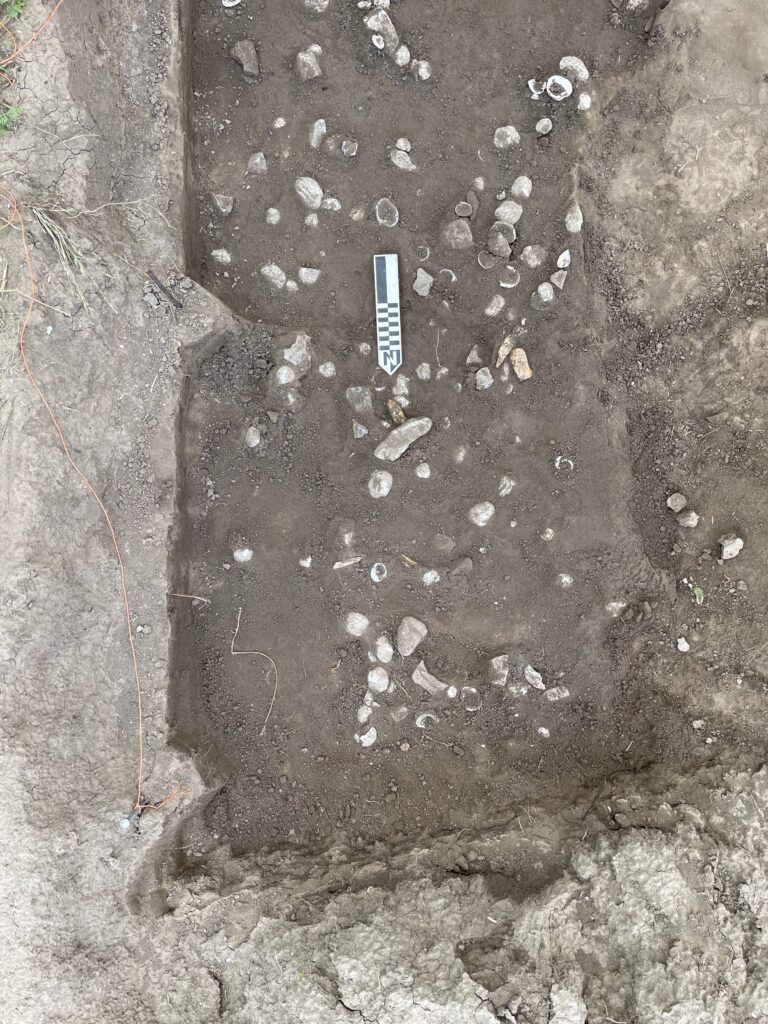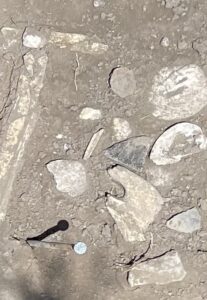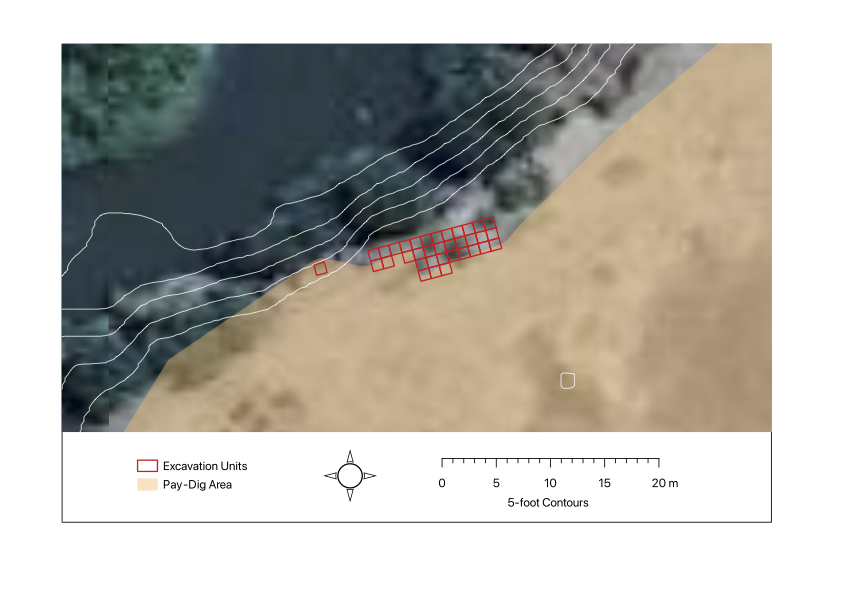New Research Project: San Saba River Site
LUAS has returned to the San Saba River site to resume the excavations begun last summer. Previously, nearly all the site’s cultural deposits were removed during a pay-dig operation but a small area along the river was spared. This area lies right above an active cutback and will eventually erode into the river, so the LUAS excavation is basically a salvage operation. The excavation last summer encountered a buried living surface 50 cm below the surface dense with lithics and food remains probably dating sometime after AD 1500, based on the presence of ceramics. This summer we will excavate as much of this living surface as possible until we need to leave the property for good. Our other project, the Antelope Draw excavation in Lampasas County, has been suspended for the time being while we concentrate on this site.
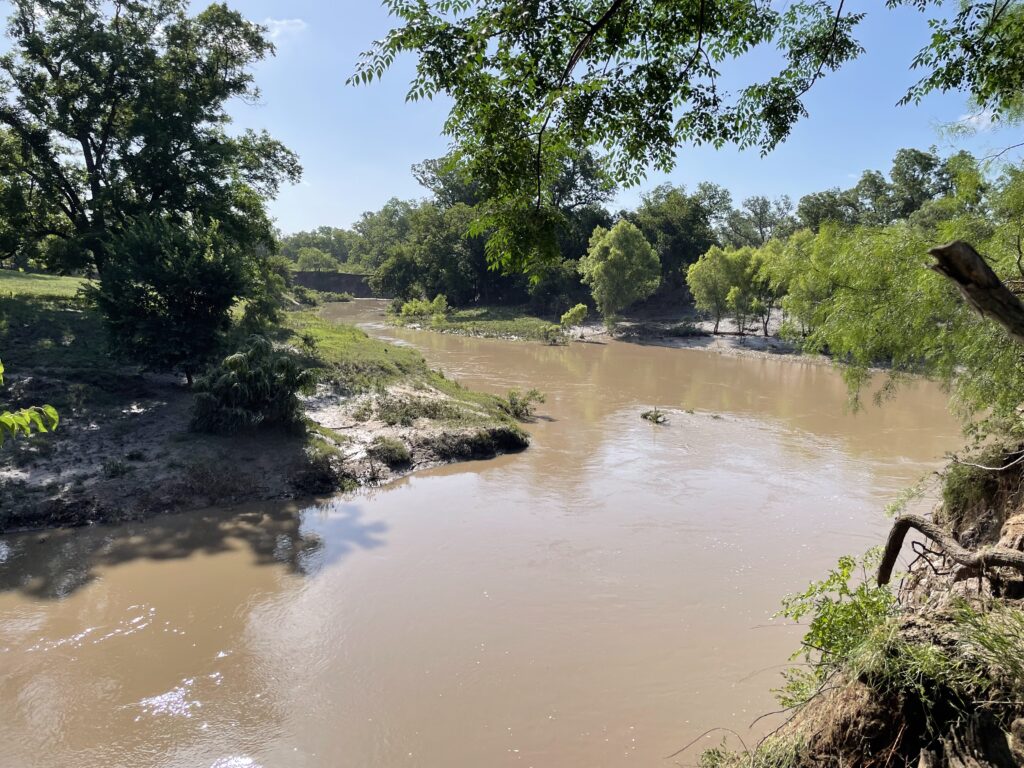
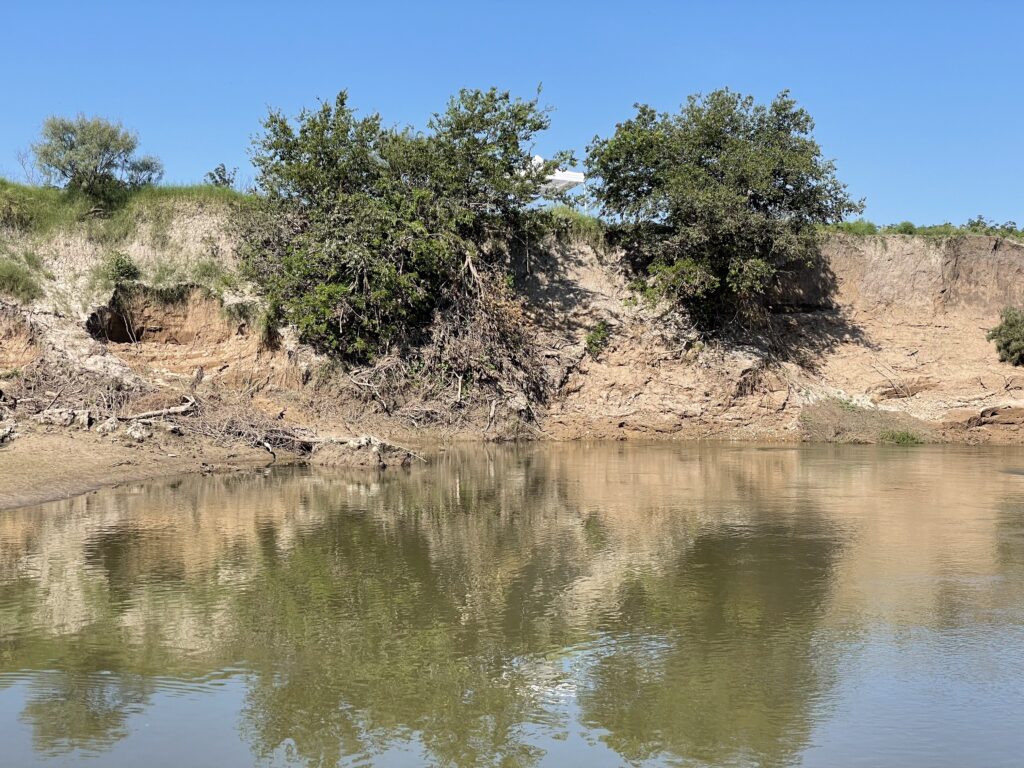
While the LUAS excavation is a salvage excavation, we hope to address some issues raised by the pay-dig operation..
Are bone-tempered (“Leon Plain”) ceramics present at the site? Photos posted on the Internet by the pay-dig operation showed sherds belonging to Caddo pottery from East Texas and at least one (corrugated) sherd from a Southwestern vessel probably from New Mexico, but no definite sherds from the locally-made bone-tempered ware usually recovered from Toyah sites in the region. So far in the LUAS excavation, only Caddo sherds have been unearthed, all possibly belonging to one large jar with incised and appliqué decoration.
Is this the site of a large bison kill? The pay-dig operators thought this might be a bison kill site, based on the large number of bison bones they encountered, including at least one complete bison skull. During the LUAS excavations, only fragmentary bison bones have so far been recovered, most purposefully broken for marrow and grease extraction. Deer bones are also common as well as those from smaller mammals and turtles with a few bones from a large turkey-size bird and a catfish
